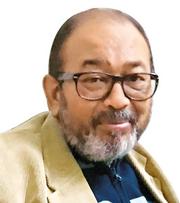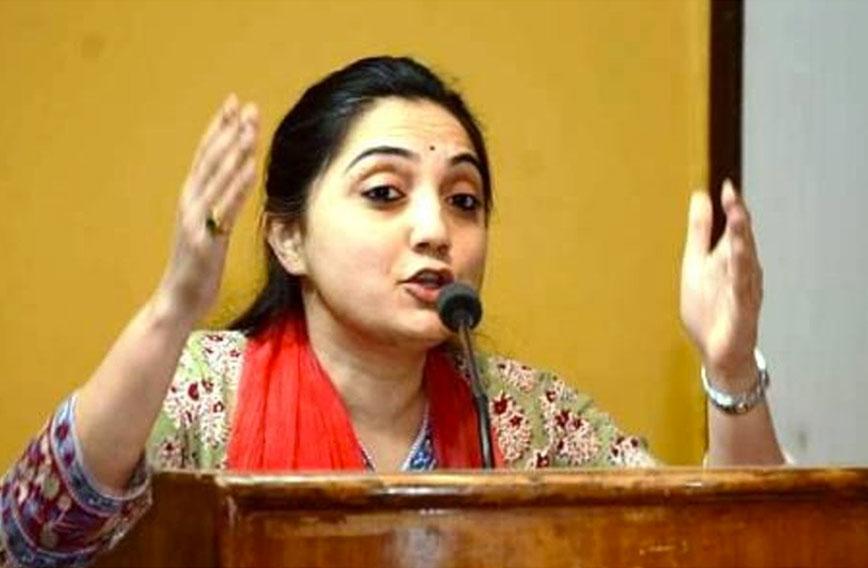
NILANJAN MUKHOPADHYAY
POLITICIANS thrive on staying in the news. No publicity is bad publicity for them, as the old saying goes. For all the condemnation and arraignment heaped on Narendra Modi over the Gujarat riots, he went from being chief minister to prime minister. When I once asked him during a decade-old conversation whether ceaseless accusations bothered him, he alluded to the advantage of being in the public gaze.
Politicians are not equally adept at this but they try with varying success. At a time when talking points are increasingly set by social media and acrimonious news television debates, it is but natural that aspiring political leaders, especially party spokespersons chosen for the ability to be combative, will try to outdo one another in hurling insults with the intention of being noticed.
For several days in June, Nupur Sharma outran all Bharatiya Janata Party (BJP) leaders, including Modi, in Google searches. There were more ‘searches’ for her than the Prophet, too, the target of her blasphemous attack during a TV show, proving that baseness pays.
Having passed out from the finest of educational institutions in India and abroad, she would not have been unaware of her statement’s sensitivity quotient. Yet, she chose to say what she said. The party did not initiate action for almost 10 days, suggesting indiscretion is routinely condoned, if not encouraged, by the party’s brass.
Even after her suspension from the party, public support for Sharma was noticeable — suggesting it is a question of time before she is rehabilitated. The politics the BJP has pursued since 2014 has created a constituency which backs the likes of Sharma and its support cannot be risked. There are, after all, many others within the BJP who have made despicable remarks against Islam and Muslims and held on to positions because there was no international outcry.
At almost the same time Sharma was making headlines, the Sangh Parivar weathered another controversy. The Rashtriya Swayamsevak Sangh (RSS) chief, Mohan Bhagwat, said at the culmination ceremony of a training camp for pracharaks that there was no need to look for shivlings under every mosque. It was an off the cuff remark, but taken in isolation from the rest of his address, it was a clear sign of the RSS deciding to de-escalate the mandir wapsi or temple restoration efforts across India.
Temple restoration appeared to be the path the Sangh Parivar had chosen when court cases began being sequentially filed over several shrines and monuments, including the Taj Mahal and the Qutub Minar, Dhar’s Bhojshala, Bhopal’s Jama Masjid and even in Karnataka. But what Bhagwat said to the pracharaks seemed to indicate a rollback. There was a sense of dismay among Hindutva supporters. What right did the Sarsanghchalak have to promise no movement for removal of the Gyanvapi Masjid, these supporters wanted to know. How could the process of ‘redeeming’ Hindu pride be given up unilaterally? This was no different from the Hindutva hardcore being vocal in its support for Sharma and asking what was ‘wrong’ with her statement. Is it not the ‘truth’, they said.
Bhagwat’s words taken in isolation indicate a desire for moderation. He has in the past too made statements in which he has seemingly reached out to Muslims and secularists.
But each time the fine print of what was said was that Muslims were part of the Sanatan Dharm tradition and that they needed to acknowledge a “common ancestry” with Hindus. What remained implicit was that this heritage included mythology. Both expectations are difficult to meet for any religious community.
There is no ambiguity that the BJP has acquired its dominance by falsification of history and by depicting the medieval era as a millennium (the duration of this period varies from leader to leader) of slavery under Muslim invaders. Despite his ‘no more looking for shivlings’ edict to the rank and file, Bhagwat was clear that the Hindu claim on the Varanasi mosque ‘had basis’ and thus its settlement could only be in favour of the community.
His suggestion that this be done by dialogue and by following the law and the Constitution was hollow because attempted mediation on the Ayodhya issue demonstrated the improbability of agreement on what the Sangh Parivar termed was a “matter of faith”. Solution to disputes in Varanasi, Mathura and other shrines (several thousand, actually, according to the ‘list’) lies within the framework of the law. On this matter, the Places of Worship Act, 1991 makes it unambiguously clear that all shrines (barring Ayodhya, that is now ‘settled’) shall remain in the state that they were in on August 15, 1947.
But despite Bhagwat’s assurance, there is no reason to believe that the claim over other shrines, especially in Mathura, will be given up. The BJP, more than the RSS, has to run with the hare and hunt with the hounds although this cannot be done simultaneously in politics. Over the past eight years, as alienation of religious minorities demonstrates, the BJP has spent more time with the hounds than the other way.
The writer is an NCR-based author and journalist. His latest book is The Demolition and the Verdict: Ayodhya and the Project to Reconfigure India. His other books include The RSS: Icons of the Indian Right and Narendra Modi: The Man, The Times. He tweets at @NilanjanUdwin
Comments
Currently there are no Comments. Be first to write a comment!




